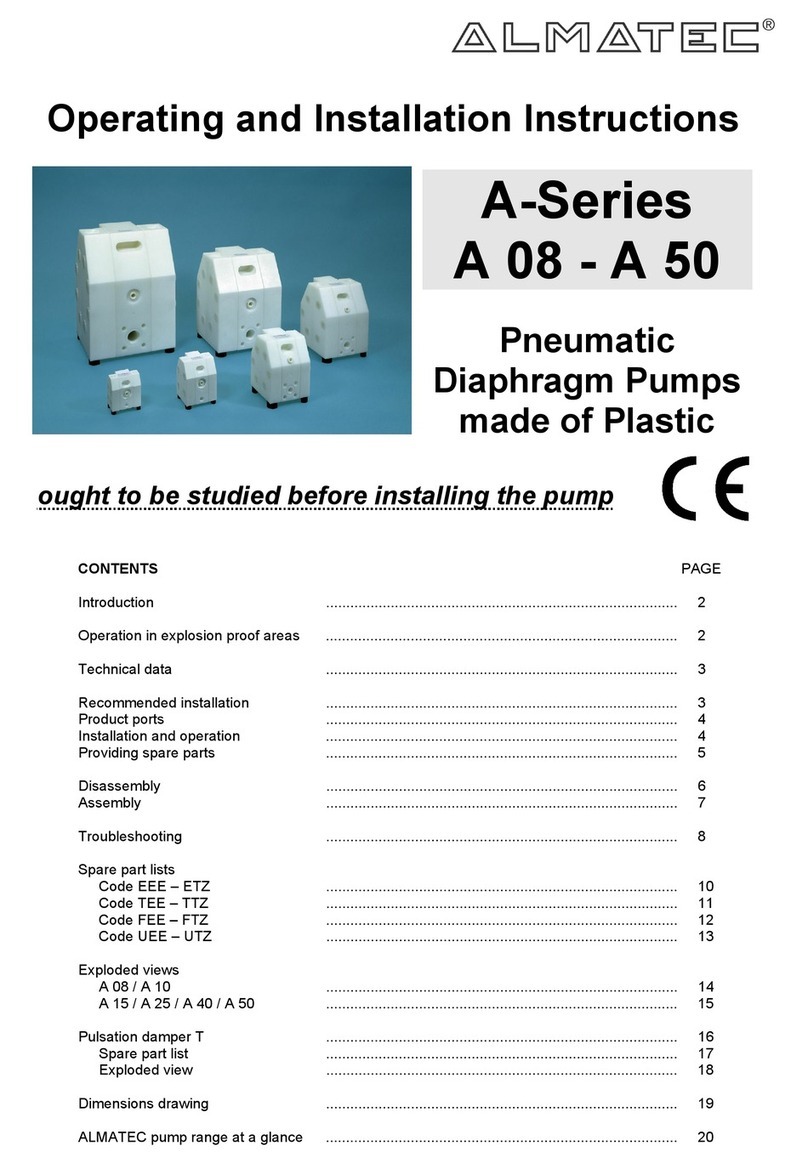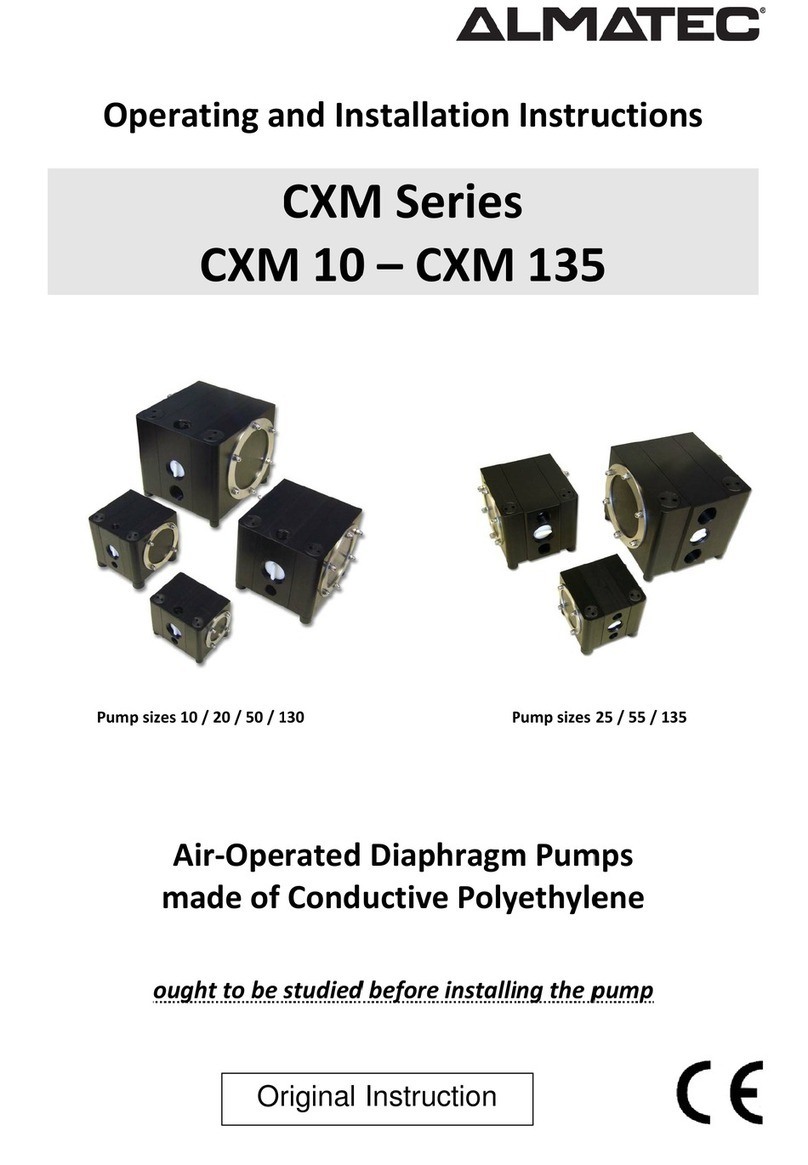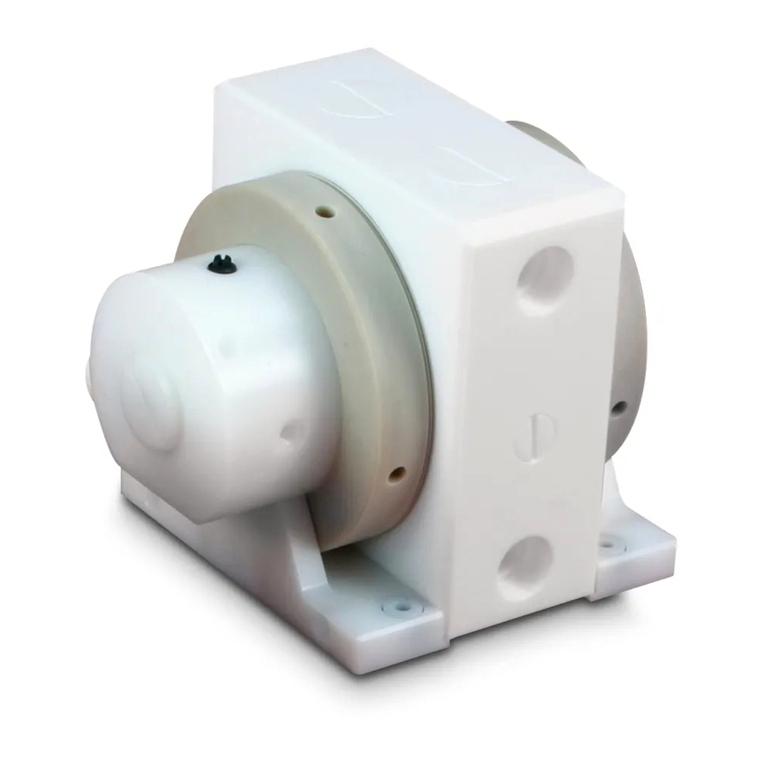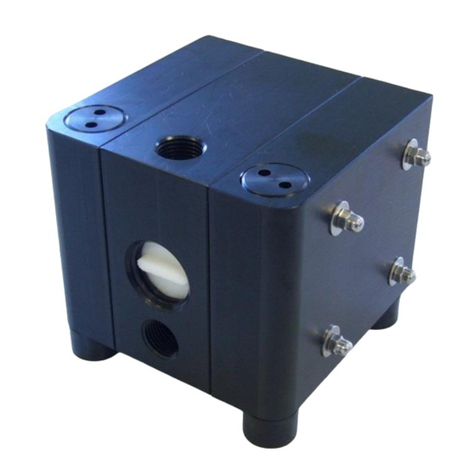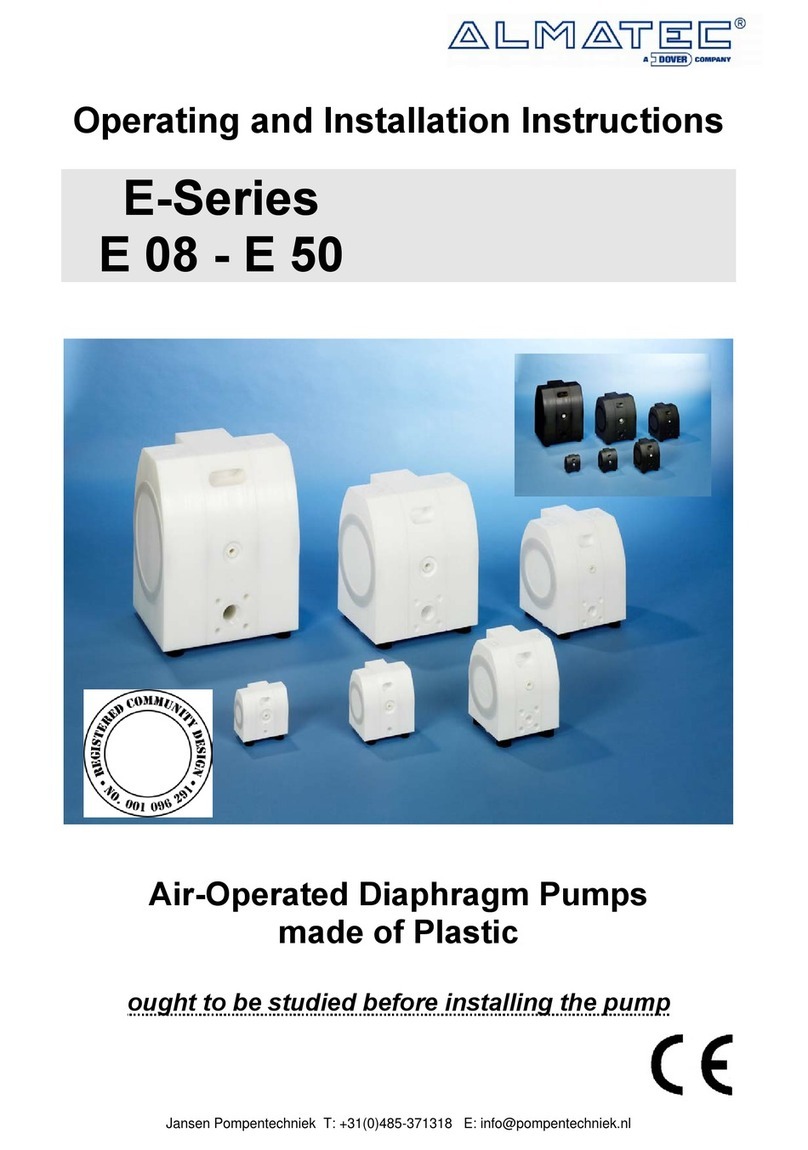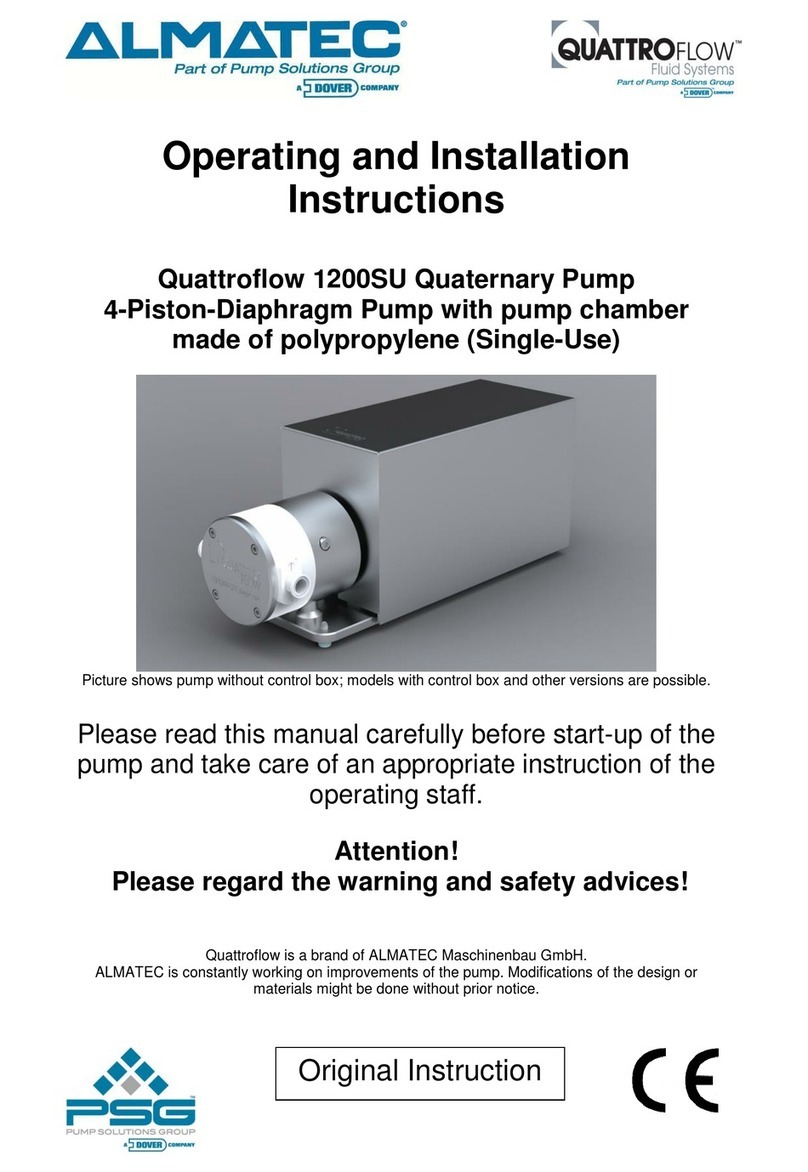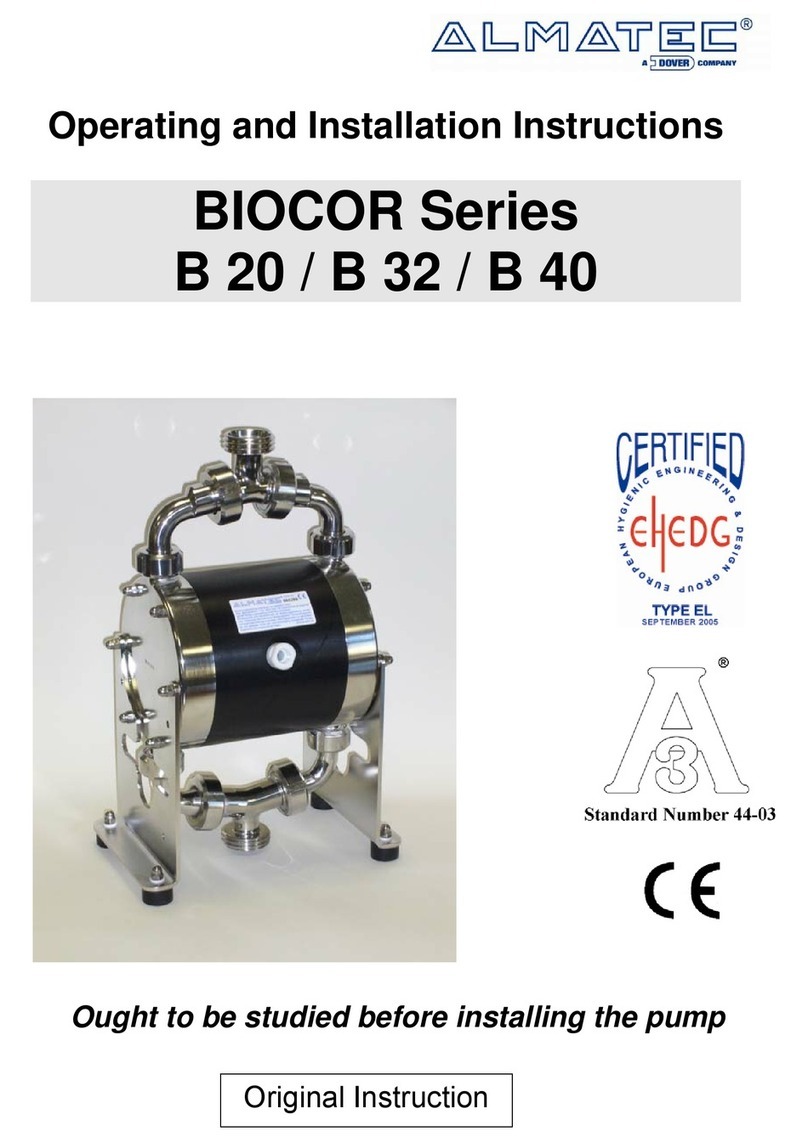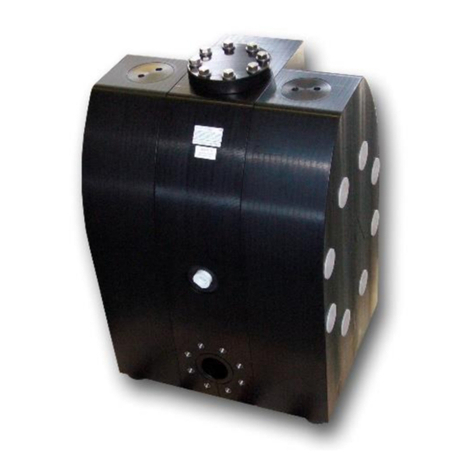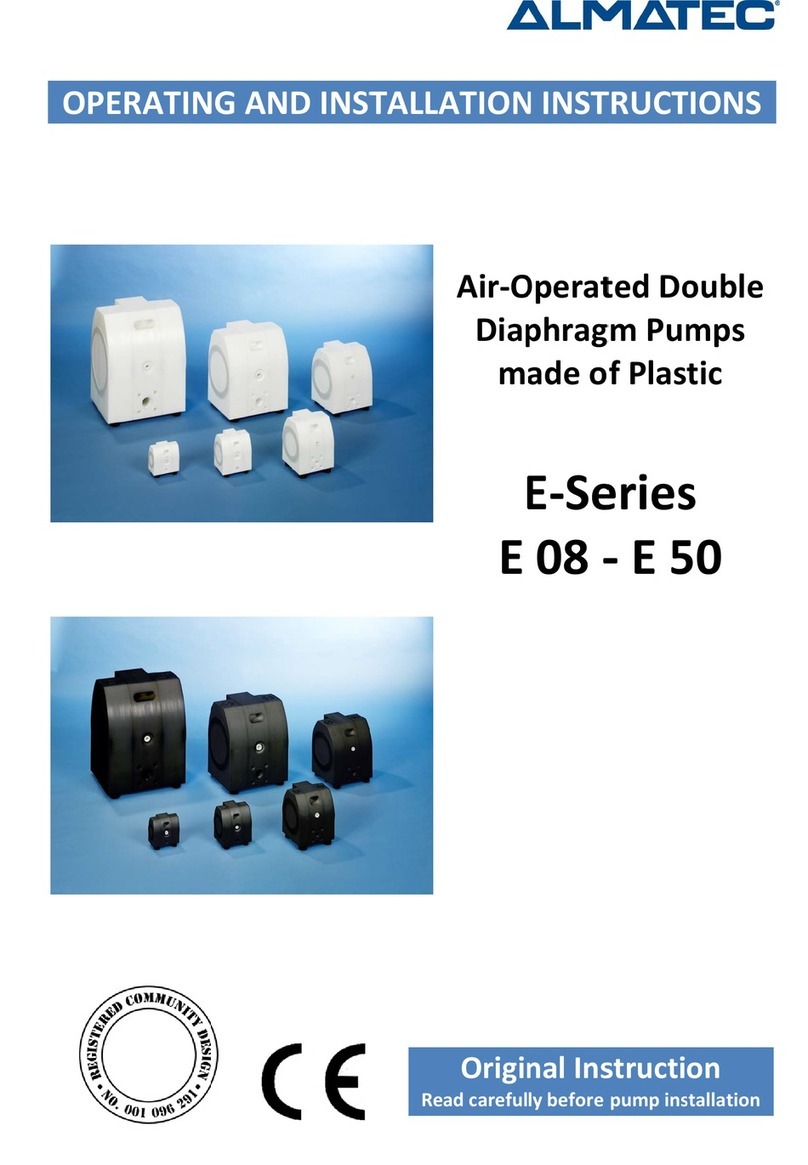
and sealing. If this is not available, a direct connection via pipe thread and sparingly attaching some sealing
tape is possible. Please note: The air inlet [18] is made of plastic to protect the center block [16], seal in
carefully. Take care that no dirt or particles can intrude into the pump during the connection, as these can
accumulate inside the pump and can cause malfunctions. An air filter [19] directly behind the air inlet [18]
prevents the entry of bulk particles.
The following regulators should be included in the air supply line:
Pressure regulator with maintenance unit/separator for condensed water (no oil supply)
The pressure regulator is used to adjust the final pressure the press will stop at. As a rough
orientation a doubling pressure can be assumed, e. g. with 5 bar (72 psig) air supply, the pump will
stop at a pressure of 10 bar (145 psig) inside the filter press. Please note: The time required for
pressing increases along with the pressure. A higher pressure means a more dry filter cake and
higher stress for all materials involved. A general guiding value cannot be given, the correct
pressure has to be found out for every single application.
Air throttle (e.g. needle valve)
This is helpful to limit the flow rate when starting to fill the press (without limiting the velocity,
the pump will start very fast which results in a lower quality of the filter cake and increased wear
of the pump). At the choice of the valve a sufficient pass-through capacity of the valve as well as
an easy fine tuning has to be taken care of.
Besides, the following elements can be installed in the air supply line:
Solenoid valve: depending on the automatisation; optimally installed before the pressure
regulator, as mostly regulated.
Micro filter: protects the pump from remains of dirt and oil in the compressed air. A micro filter
can replace an air maintenance unit.
Pressure relief valve: prevents irregular regulation of the pump and filter press.
The integrated air control system PERSWING P® is a precision-control that requires oil-free, dry and clean
compressed air for optimal function. The quality of the driving air for the pump depends on the operating
conditions (e.g. flow rate at the beginning, final pressure of the filter press). For a rough orientation, we
recommend to lean against the following quality classes of ISO-DIS-8573-1: solids - class 2, dew point - class
4-3, oil - class 3. Eventual icing of the muffler or the whole pump most often results from insufficiently dried
driving air. A muffler [20] soiled after short period of operation indicates soiled driving air which can be
helped by a micro filter chosen according to the max. air flow. In humid surroundings, icing from the outside
may occur despite the driving air is dried. If so, a prolonged waste-air-exhaust (ca. 500 mm / 20 inch by pipe
or hose) can be helpful. When installing the pump into boards or cabinets, it has to be ensured that cold air
does not get caught behind the muffler. ALMATEC high pressure pumps do not require any lubrication. It has
to be secured, that no oil can enter the pump. In applications with a tendency to freezing at the waste air
exhaust, good experiences in practise have been achieved by pre-heating the driving air to increase the
distance to the dew point of the air. Doing so, it has to be considered that the driving air temperature
generally may not exceed 50°C (122°F) to avoid expansion and sticking effects on the air side. This max. air
temperature is a well valid when using a compressor producing warm air which is e.g. often true for truck
compressors.
3.2. Start-up and operation of the pump
When starting to install the pump, the housing bolts [13] have to be tightened. This has to be done before
the pump develops a decent discharge pressure. The bolts [13] should be tightened crosswise and alternately
starting with those arranged in the circle of the diaphragm. The aim of this is to work against the effect of
housing parts "settling" after manufacture (e.g. during transport) because of varying temperatures.
The housing bolts [13] have to be fixed according to the torque data of the following schedule. At the
beginning, the bolts need to be checked regularly and fixed if necessary. It can also be necessary after longer
periods of stoppage, at extreme temperature variations, after transport and dismantling the pump. In case of
temperature varying between extremes or high temperature difference between the liquid and the
